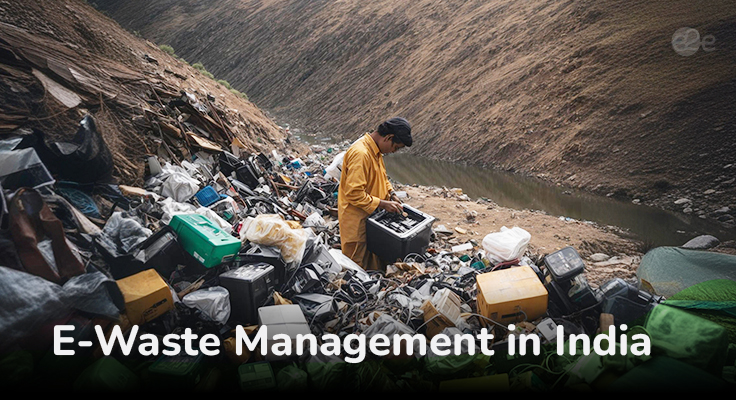E-Waste Management in India
E-Waste Management in India: The Urgent Need for Sustainable Solutions
Adopting sustainable e-waste recycling methods is crucial for India’s environmental protection. The country requires a significant overhaul in its e-waste management system to address this growing crisis. Let’s explore why sustainable e-waste management is so important for India's future.
The Problem with E-Waste
E-waste, or electronic waste, includes old or unused electronic devices like smartphones, laptops, and appliances. In the IT age, the volume of e-waste in India is increasing rapidly. E-waste often contains toxic chemicals such as lead, mercury, and PVC, which pose a threat to both human health and the environment. Without an organized e-waste disposal system, these hazards can escalate into serious health issues and environmental damage.
95% of E-Waste is Handled Illegally by the Informal Sector!
The informal e-waste sector in India often uses unsafe methods to manage e-waste, which exacerbates the issue. Informal workers collect and burn e-waste without segregating harmful metals, thereby releasing toxic fumes. They either burn it or dump it in landfills, causing substantial environmental pollution. If left unregulated, this will continue to pose a severe environmental threat to India.
The threats posed by these practices include:
-
Air Pollution : Burning e-waste releases toxic fumes that pose a serious health hazard. India already faces high levels of pollution, and unregulated e-waste disposal only adds to the issue. -
Water Pollution : E-waste dumped in landfills can lead to pollutants, including mercury, lead, arsenic, and PVC, seeping into water sources, contaminating underground water, lakes, and ponds in nearby areas. Consuming water contaminated with these substances can cause severe health issues and even fatalities. If left unregulated, areas around such landfills will eventually become uninhabitable. -
Biodiversity Loss : Environmental pollution from e-waste threatens biodiversity by disrupting ecosystems. Many plant and animal species in surrounding areas are at risk.
The Solution: A Structured E-Waste Management System
Organized e-waste recycling is essential to address these challenges. Recycling e-waste involves treating waste and making practical use of valuable materials. In an organized system, e-waste materials are carefully segregated into reusable, hazardous, and non-reusable categories. Toxic materials are treated to prevent contamination, while valuable materials are extracted for future use. This sustainable approach to e-waste disposal can significantly reduce environmental damage and promote a greener future.
